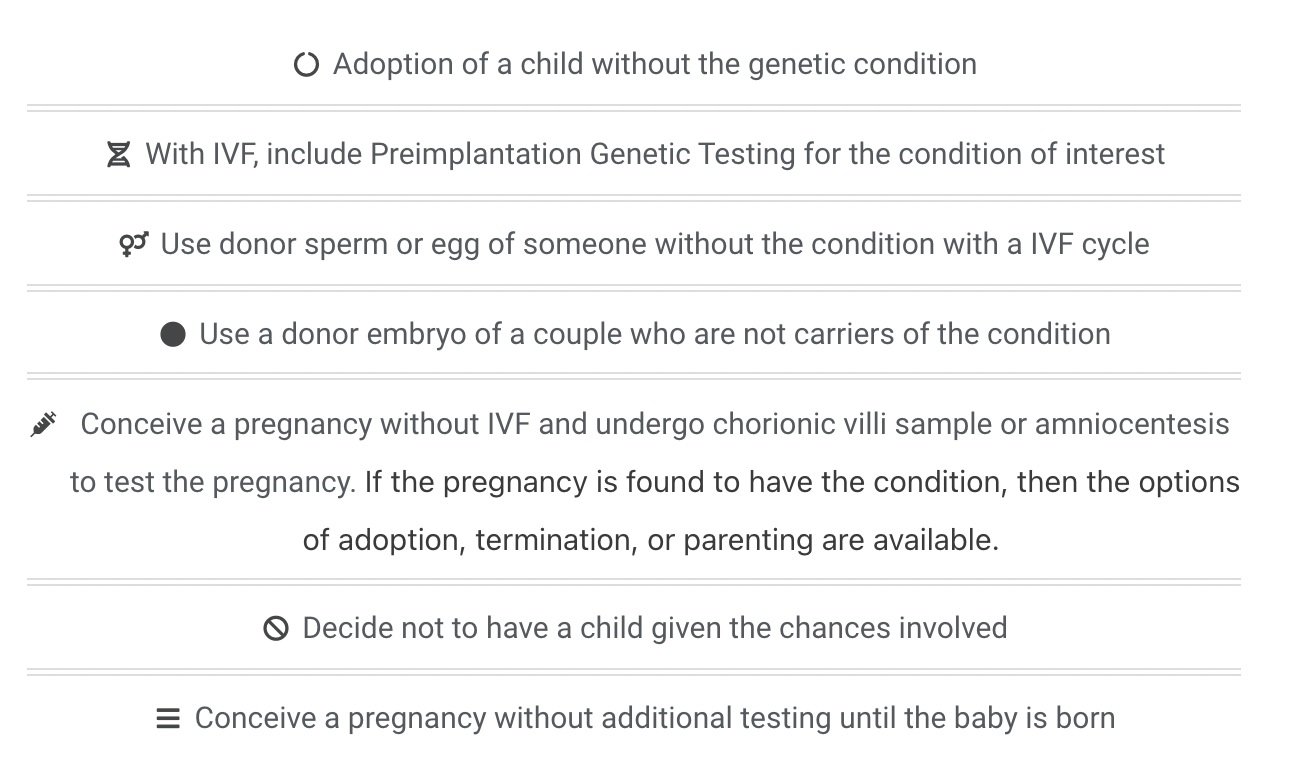It’s okay to be a carrier of a genetic condition, we all are-
Below are the steps to take if someone discovers they are a carrier:
Step One: Contact a healthcare provider
Either the provider, who ordered the test, or a genetic counselor can provide additional detail to the test results. Unfortunately, carrier screening can be more complicated than it should be. Therefore, it is important to consult a medical provider. This site provides general information on carrier screening, but an individual’s specific result may need more attention.
If a medical provider did not order the test or someone would like to speak to a genetics professional, check out the National Society for Genetic Counselors to find a provider, who specializes in this type of testing.
Step Two: Learn More About the Condition(s)
We are all carriers of a few conditions. Carrier screening only brings what condition we are a carrier of to light. More information on the specific condition can be found on this medically reviewed and trusted website: https://medlineplus.gov/genetics/condition/. This site will describe the features of the condition. People can decide based on the features and treatment of a condition on if they want to learn more about the risk of this condition for a future or current pregnancy as well as if they would consider other reproductive options. Some people feel that a particular genetic condition is manageable, and they wouldn't change anything in regards to their reproduction. Other times people want to learn more and to try to prevent having a child with the condition.
Step Three: Determine the Inheritance Pattern
The inheritance pattern of a condition helps to determine the chance to have a pregnancy with the condition. There are different inheritance patterns and caveats, so there are different chances. This is why speaking with a genetic counselor or medical provider can be so helpful. The most likely inheritance patterns of conditions that carrier screening assesses for are X-linked and Autosomal Recessive.
The picture to the left represents what our chromosomes look like. Our genes fit inside of our cells by packaging themselves up into chromosomes. Each chromosome has about 500-1000 genes on it. Usually a person has 46 chromosomes. Half of the chromosomes come from our mom or egg donor and the other half come from our dad or sperm donor. When chromosomes are discussed, they are referred by their pairs, which there are 23 pairs of chromosomes.
Autosomal Recessive
Autosomal refers to the type of chromosome. The chromosomes are labeled based on their size. Chromosome pair number 1 is the largest chromosome, whereas chromosome 22 is the smallest. Chromosomes 1-22 are considered autosomes. Recessive refers to the genes. A recessive condition means that both copies of the gene of interest is not working, so it causes the condition to occur. Since we inherit those gene copies from our parents, both of them, typically, would need to be carriers of the same condition in order to pass on the gene that isn't working and to cause the condition.
If someone is a carrier of an autosomal recessive condition, then their partner can be tested to see if he or she is also a carrier. If the partner or donor is a carrier of the same condition, then there is a 25% risk each pregnancy conceived would have the condition.
X-Linked
X-linked means the gene of interest is found on the X chromosome. For genetic females, they have two X chromosomes; therefore, 2 copies of each gene on the X chromosome. Genetic males have a X and Y chromosome (as shown above). Usually, females are carriers of X-linked conditions, and males have the X-linked condition. Typically, if a female is a carrier of an X-linked condition, her partner or donor do not need to do testing unless they have symptoms of the condition. Males are not generally considered carriers of x-linked conditions because they only have one X chromosome and one copy of the gene.
If someone is a carrier of an X-linked condition, then the chance for a male baby to have the genetic condition is 50%. For a female baby, the risk to be a carrier is 50%. Sometimes females, who are carriers, can have symptoms of the condition as well, so they will need certain care and management.
Step Four: Consider The Reproductive Options
If someone is a carrier of an X-linked condition or both members of the reproductive pair are carriers of the same autosomal recessive condition, then there are reproductive options to consider. Of course, not everyone will want to proceed with the following and ultimately speaking with a healthcare provider is recommended to determine which option fits best with someone’s values and health.




